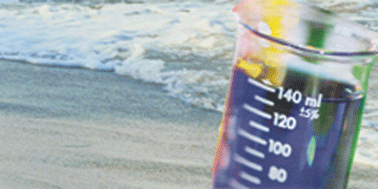Chemical markers of human waste contamination: Analysis of urobilin and pharmaceuticals in source waters
Abstract
Giving public water authorities another tool to monitor and measure levels of human waste contamination of waters simply and rapidly would enhance public protection. Most of the methods used today detect such contamination by quantifying microbes occurring in feces in high enough densities that they can be measured easily. However, most of these microbes, for example E. coli, do not serve as specific markers for any one host species and many can have origins other than feces. As an alternative, chemicals shed in feces and urine might be used to detect human waste contamination of environmental waters. One potential chemical marker of human waste is the compound urobilin. Urobilin is one of the final by-products of hemoglobin breakdown. Urobilin is excreted in both the urine and feces from many mammals, particularly humans. Source waters from 21 sites in New England, Nevada, and Michigan were extracted using hydrophilic–lipophilic balance (HLB) cartridges and then analyzed by high performance liquid chromatography–electrospray mass spectrometry (HPLC–ES-MS). As a marker of human waste, urobilin was detected in many of the source waters at concentrations ranging from not detectable to 300 ng L−1. Besides urobilin, azithromycin, an antibiotic widely prescribed for human use only in the US, was also detected in many of these waters, with concentrations ranging from not detectable to 77 ng L−1. This methodology, using both urobilin and azithromycin (or any other human-use pharmaceutical) could be used to give public water authorities a definitive method for tracing the sources of human waste contamination. The analysis and detection of urobilin in surface waters by HPLC–ES-MS has not been previously reported in the peer-reviewed literature.


 Please wait while we load your content...
Please wait while we load your content...